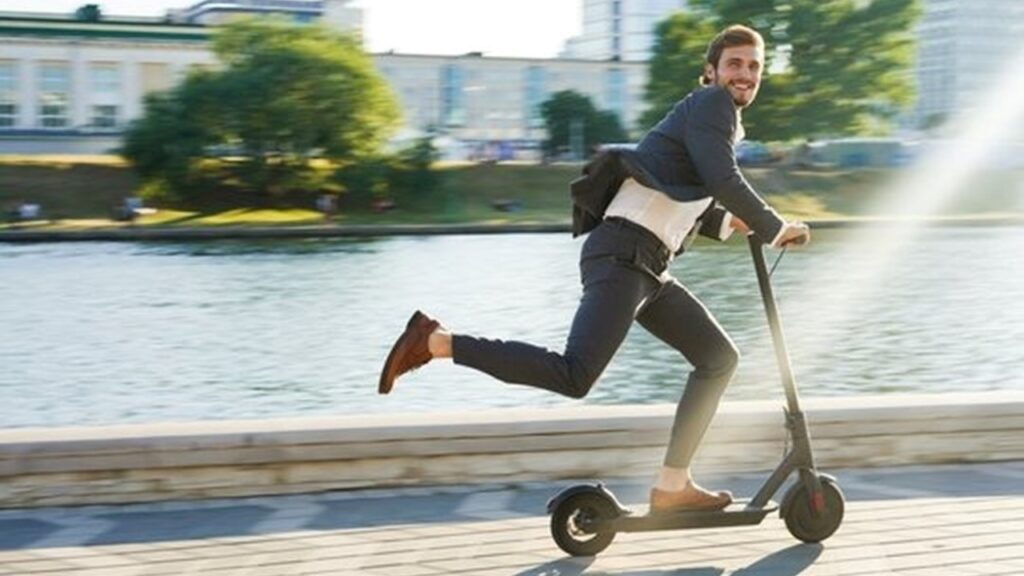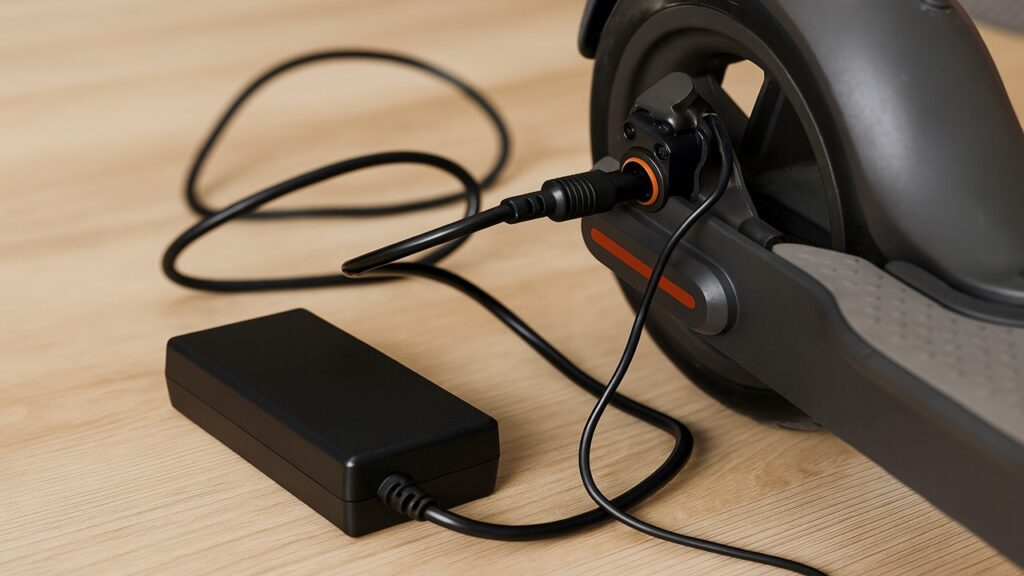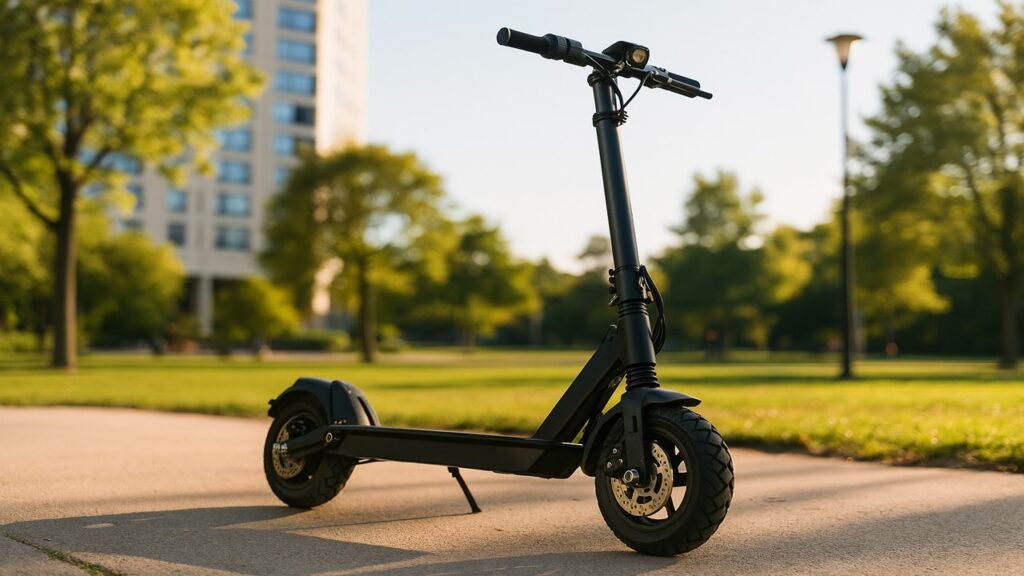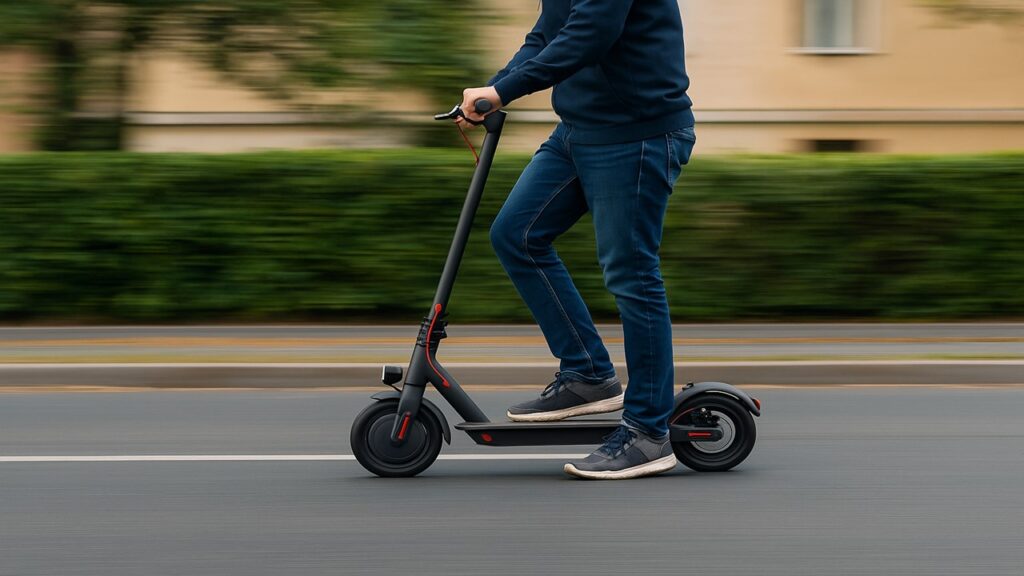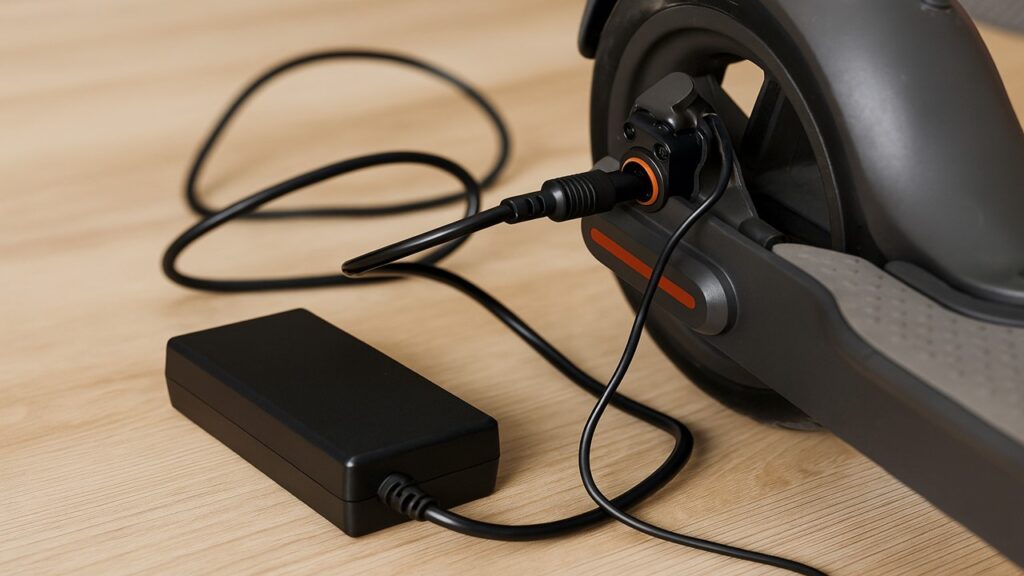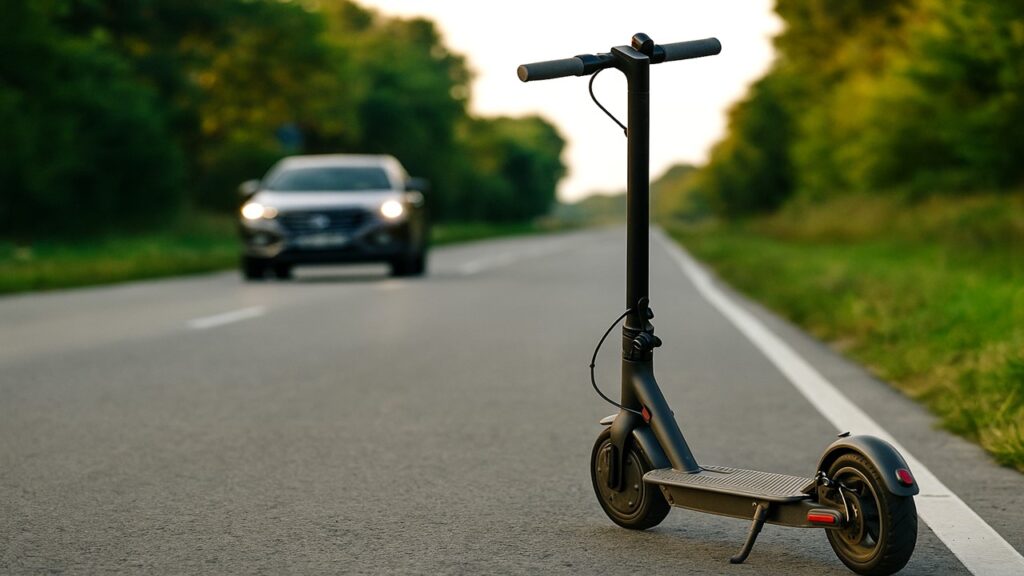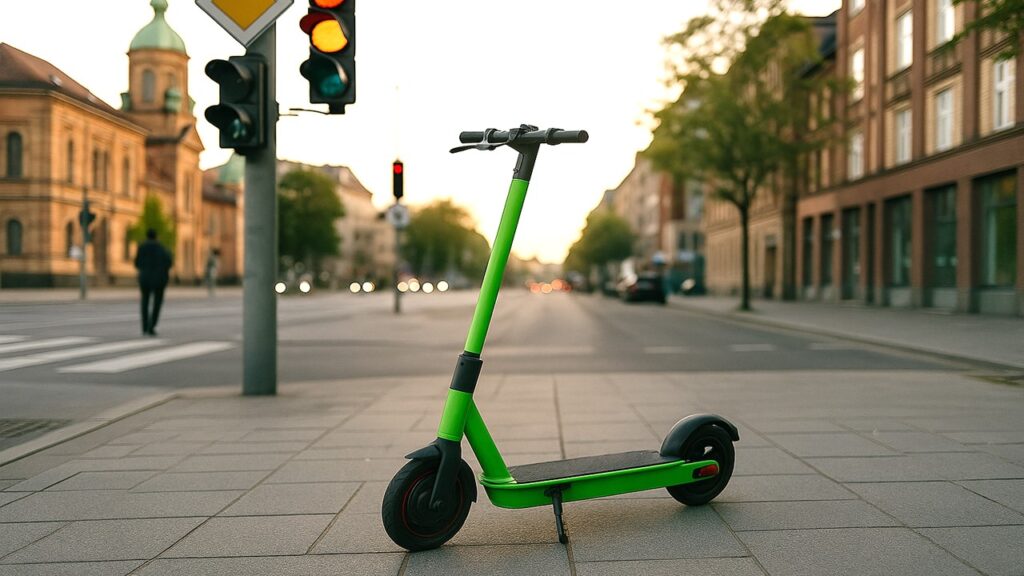
Electric scooters work by using a battery-powered motor that drives the wheels when you press the throttle. The throttle sends a signal to the controller, which pulls power from the battery and pushes it to the motor. That’s what gets the scooter moving.
In this article, we’ll walk you through the basics of how an electric scooter works, from the main parts inside to how each one plays a role in getting you from point A to B.
We’ll keep things simple, clear, and practical so you understand exactly what’s happening under the hood—or in this case, under the deck.
What Is an Electric Scooter?
An electric scooter is a two-wheeled vehicle powered by a rechargeable battery and an electric motor. You control it using handlebars, just like a regular kick scooter, but it moves on its own when you press a throttle.
These scooters have become popular for short city commutes, especially because they’re quiet, compact, and don’t require gas. Some are built for fun, while others are tough enough for daily use or longer rides. Most people ride them standing up, though some models have seats too.
Electric scooters are different from gas scooters or mopeds. They don’t burn fuel or make loud engine noise. Instead, they use electricity to quietly spin the wheels. That’s why they’re a cleaner and more convenient way to travel short distances.
Core Components That Make It Work
Electric scooters are built around a few key parts. Each one plays a role in how the scooter runs, steers, and stops.
- Battery – Stores the electric power that runs everything.
- Motor – Uses that power to spin the wheels.
- Throttle – Lets you control the speed with your hand.
- Controller – Connects all the parts and makes sure they work together.
- Brakes – Help you slow down or stop safely.
- Wheels and Tires – Carry the scooter and affect ride comfort.
- Suspension – Reduces bumps and makes the ride smoother.
- Frame and Handlebars – Give the scooter its shape and help you steer.
How the Battery Powers the Ride
The battery is like the gas tank of your electric scooter, except it stores electricity instead of fuel. Most scooters use lithium-ion batteries because they’re lightweight, long-lasting, and quick to recharge.
When you press the throttle, the controller tells the battery to send out power. That energy travels to the motor, which uses it to spin the wheels. The size of the battery—measured in watt-hours (Wh)—affects how far you can go on one charge. The bigger the number, the longer the ride.
Several things affect battery life, including your weight, speed, road conditions, and even weather. Most scooters can travel anywhere from 10 to 30 miles on a full charge, depending on the model and how you ride it.
How the Motor Moves the Scooter
The motor is what actually makes your scooter move. It takes power from the battery and turns it into motion. Most scooters today use a brushless hub motor, which is built right into one or both of the wheels.
When the motor gets power, it creates magnetic forces that rotate the wheel. That’s what moves the scooter forward. The motor’s strength is measured in watts (W). The higher the watts, the more powerful the scooter, meaning it can go faster and handle hills better.
A standard scooter motor might be around 250W to 500W, while high-performance models can go over 1000W. But power isn’t everything. Efficiency and how the scooter is built also matter for a smooth, reliable ride.
What the Controller Does Behind the Scenes
The controller is like the brain of the scooter. It connects the throttle, battery, and motor, and makes sure they all talk to each other correctly.
When you press the throttle, the controller decides how much power the motor should get. If you squeeze the brakes, the controller cuts the power or even sends energy back to the battery through regenerative braking.
It also helps manage heat, protects the battery from overload, and keeps everything running safely. If the controller fails, the scooter may not move—or worse, it could behave unpredictably. That’s why this little box plays such a big role in how your scooter works.
How the Throttle Sends the Signal
The throttle is what you use to tell the scooter how fast to go. It’s usually a small lever or button on the handlebar. When you press or twist it, it sends a signal to the controller.
The controller then tells the battery to release energy to the motor. The harder you press, the more power the motor gets—and the faster you go. It’s that simple.
There are a few different types of throttles:
- Thumb throttle – Pressed with your thumb, common on beginner scooters.
- Twist throttle – Similar to a motorcycle grip, twist to speed up.
- Trigger throttle – Pulled with your finger, often found on more powerful scooters.
Each type works the same way in the end—it just depends on your comfort and the scooter model.
How Brakes Help You Stop Safely
Brakes are one of the most important parts of your scooter. They help you slow down or stop when you need to. Most electric scooters come with more than one type of braking system.
Here are the main types:
- Foot brake – You press down on the rear fender with your foot to create friction. Basic but effective.
- Mechanical brakes – These include disc and drum brakes, which use levers and cables to press brake pads against the wheels.
- Electric brake – Stops the motor directly, often using regenerative braking to recharge the battery a little during braking.
Some scooters use a combo of these systems for better safety. The best setup is usually disc brakes plus an electric brake, giving you smooth, strong stopping power in all conditions.
Wheels and Suspension: Comfort Matters
Wheels do more than just roll—they affect how smooth your ride feels, how much grip you have, and how well your brakes work.
There are two main types of tires:
- Solid tires – These are puncture-proof but can feel stiff and bumpy, especially on rough roads.
- Pneumatic (air-filled) tires – These give a softer, more cushioned ride, but they can go flat and need to be checked more often.
Some scooters also have suspension systems to absorb bumps. These might use springs, rubber, or hydraulic parts to soften the ride. Scooters with solid tires often rely more on suspension to stay comfortable, while air-filled tires can handle rough roads better on their own.
Handlebars and Frame: Steering and Structure
The handlebars let you steer, accelerate, and brake. Most come with rubber grips to keep your hands from slipping and hold all your controls in easy reach.
Some handlebars can be folded down, which makes the scooter easier to carry and store. On higher-end models, you might also find adjustable handlebars so you can set them to your height.
The frame is the main structure of the scooter. It holds everything together—from the wheels to the battery. Most frames are made of aluminum or steel, and some lightweight models use carbon fiber. A strong, well-built frame means better balance, more stability, and a longer-lasting scooter.
Step-by-Step: What Happens When You Ride
When you hop on your electric scooter and press the throttle, a series of quick actions take place behind the scenes. Here’s how everything works together to get you moving:
- You press the throttle. This is your way of telling the scooter, “Let’s go.” It could be a thumb lever, twist grip, or trigger—whatever your scooter uses to control speed.
- The throttle sends a signal to the controller. The controller is like the scooter’s brain. It receives that signal and decides how much power is needed based on how hard you pressed the throttle.
- The controller tells the battery to release power. The controller draws just the right amount of energy from the battery and sends it to the motor. It also makes sure the voltage and current stay within safe limits.
- The motor takes that power and spins the wheel. Most scooters use a brushless hub motor built directly into the wheel. As electricity flows in, the motor creates magnetic fields that make the wheel rotate.
- The scooter moves forward. As the motor turns the wheel, the scooter starts rolling forward. The more power the motor gets, the faster you go.
- When you brake, everything slows down. Pressing the brake lever signals the controller to cut power from the motor. If your scooter has regenerative braking, it may also send a little energy back to the battery while slowing down.
All of this happens almost instantly, with each part playing a role in keeping your ride smooth, responsive, and safe. It’s a neat bit of engineering packed into a small, easy-to-use machine.
Final Thoughts
Electric scooters may seem simple on the outside, but there’s a lot of smart tech packed into that small frame. The battery stores energy, the motor turns it into motion, the controller keeps everything in sync, and the throttle and brakes give you full control.
When these parts work together, you get a smooth, quiet, and eco-friendly ride. Whether you’re commuting to work or just cruising around, knowing how your scooter works can help you ride smarter—and take better care of it too.
If you’re curious about how different models compare or which one’s right for you, check out our latest reviews and electric scooter buying guides.
FAQs
Do electric scooters charge while riding?
Most don’t. Some high-end models use regenerative braking, which sends a small amount of energy back to the battery when you slow down, but it’s not enough to fully recharge. You’ll still need to plug it in to charge.
Can electric scooters go uphill?
Yes, but how well they handle hills depends on the motor power. Scooters with at least 350W can climb small hills. For steeper slopes, 500W or more is usually better.
What affects how far an e-scooter can go on one charge?
Battery size is the biggest factor, but things like rider weight, terrain, speed, wind, and tire type also play a role.
Are electric scooters waterproof?
Not fully. Most are water-resistant, meaning they can handle light rain or splashes. But riding through deep puddles or in heavy rain can damage the electronics.

Nusrat is an electric scooter enthusiast and daily rider who loves exploring new ways to make urban commuting cleaner and more enjoyable. She shares hands-on reviews, performance insights, and practical riding tips to help others find reliable, safe, and affordable electric scooters. Through her detailed guides and real-world experience, Nusrat helps riders make smarter choices and enjoy every ride with confidence.



